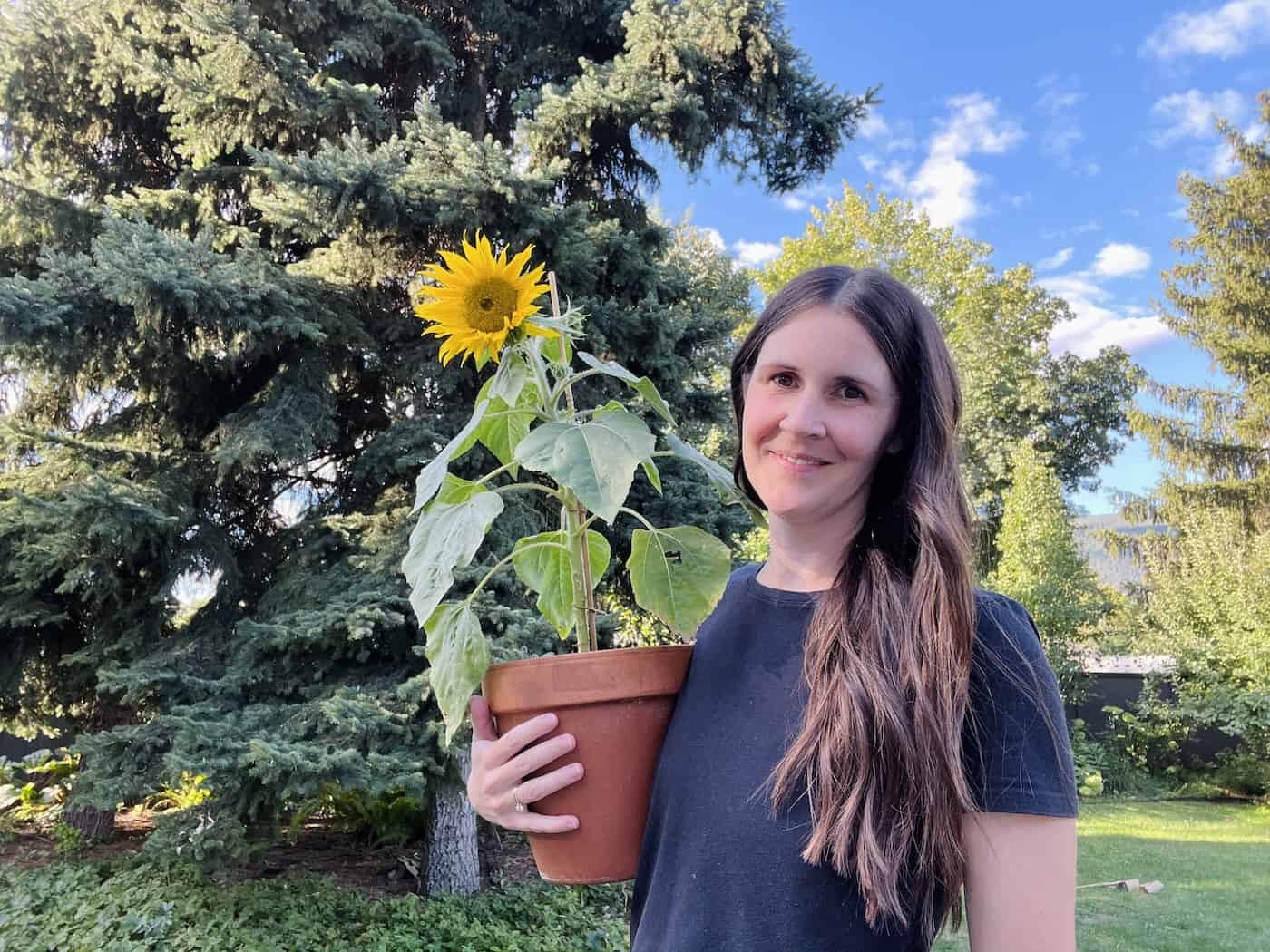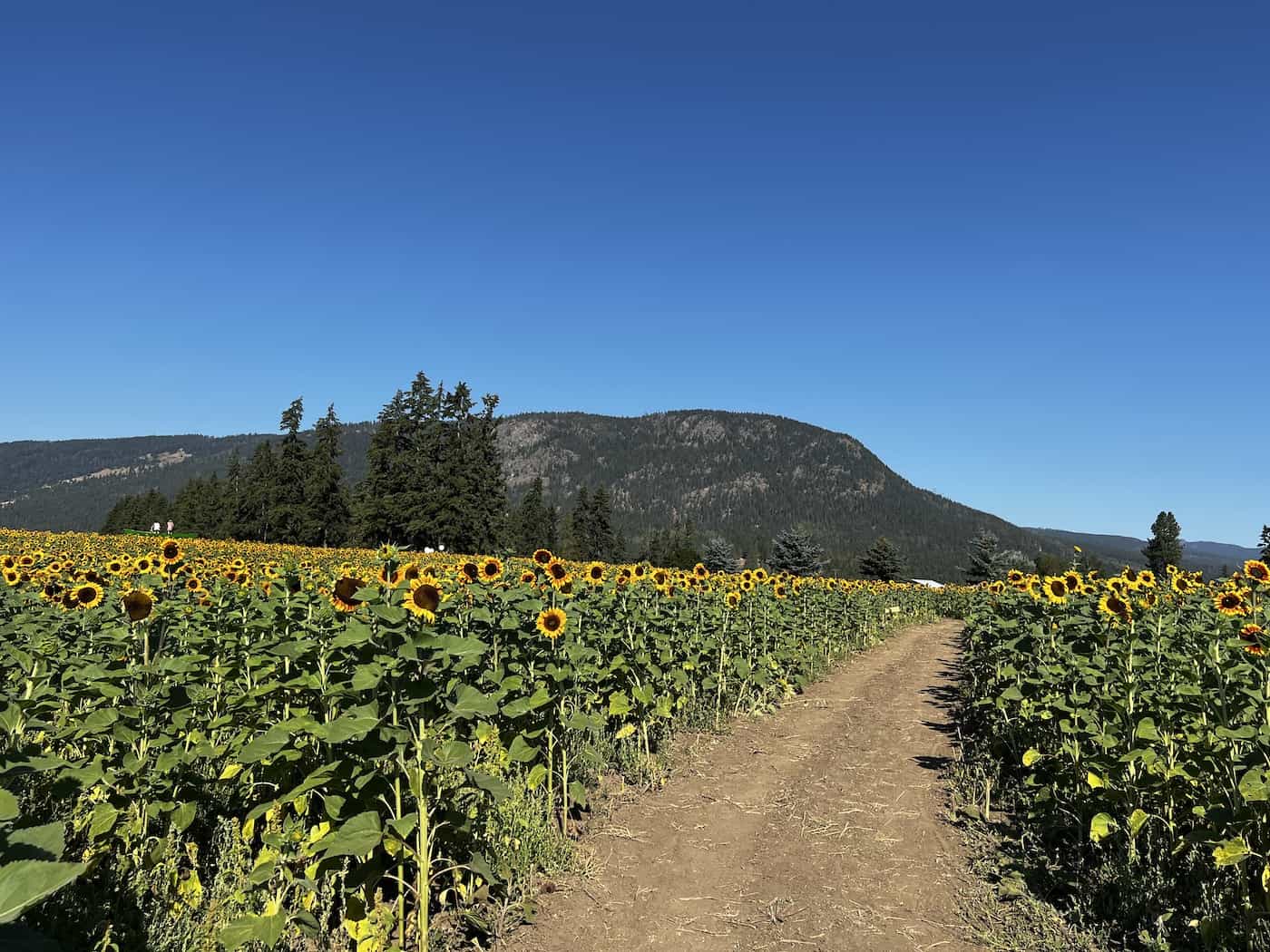Most sunflowers grow to about 6 feet tall. This includes many popular ornamental varieties grown in gardens and by flower farmers, as well as black oil types grown for pressing into sunflower oil. Tall sunflower varieties tend to grow more like 10-14 feet tall in good conditions. Dwarf sunflowers usually grow to a maximum height of under 4 feet tall.

How tall is a sunflower?
Sunflowers are available in a wide range of heights, typically between 2 and 14 feet tall. The height of a sunflower depends on its variety and how well-established it is in its growing environment.
Tall sunflower varieties, such as Mammoth Grey Stripe or Giganteus, routinely reach over 10 feet tall with strong stems and big blooms. Dwarf varieties, like Big Smile or Teddy Bear, usually achieve heights under 4 feet.
Here are the three main height categories of sunflowers:
- Dwarf sunflowers: under 4 feet tall
- Average sunflowers: 4-8 feet tall
- Tall sunflowers: over 8 feet tall
There are hundreds of different varieties (cultivars) of sunflowers. Each one can be placed into one of the three height categories above.
The height of a sunflower also depends on how well-established it is in its environment. If grown under ideal conditions with ample sunlight, water, and nutrients, sunflowers are likely to reach the maximum height for their variety. Sunflowers can even exceed their expected heights when provided with the right amount of care and attention.

Factors affecting sunflower height
There are several important environmental factors that can affect the final height of a sunflower plant. Sunflowers tend to be short and stunted if the inputs they need are quite limited, and alternatively, the plants can grow beyond their expected mature height if everything they need to grow (water, sunlight, nutrients, space, et cetera) is available in abundance.
Good soil quality and fertility are essential for sunflowers to reach their maximum height potential. Sunflowers need loose, well-drained soil, and rich in organic matter. They also require adequate nitrogen and phosphate levels to thrive.
Sunlight is another important factor influencing how tall a sunflower grows. Suitable conditions for sunflowers include full or partial sunlight, with at least 6 hours of direct sunlight a day.
Water is also key to the growth and development of sunflowers. They require regular watering during their flowering period and should never be allowed to dry out completely if you’re looking for optimal growth.
Finally, how regularly you deadhead your flowers (for branching types that produce more than one flower head) can also affect how tall your sunflowers grow. Deadheading will encourage the plant to produce more flowers, but it can also reduce the overall height of your sunflowers.

How to grow short sunflowers
If you want to keep your sunflowers on the shorter side, choose a dwarf variety. Here are some popular small sunflowers to choose from:
- Big Smile sunflower
- Suntastic sunflower
- Teddy Bear sunflower
You can also encourage the plants to stay compact by planting them in a container such as a flowerpot. While larger sunflowers don’t do particularly well in containers, many of the dwarf cultivars have been bred specifically for container growing.

How to grow average-height sunflowers
Many average-height sunflowers grow to be about 6 feet tall. This includes many of the florist sunflower varieties and some of the heirloom branching types preferred by pollinators.
Here are some popular average-height sunflowers to choose from:
- Autumn Beauty
- Lemon Queen
- Velvet Queen
- ProCut line
These plants grow best in full sun and usually don’t need too much irrigation.

How to grow tall sunflowers
Tall sunflower varieties can easily reach heights of 10-14 feet in good growing conditions. These varieties tend to have a large single flower, although some branching giant types are also available.
Some popular tall sunflowers to choose from include:
- Mammoth Grey Stripe
- Giganteus
- Kong
These plants require more space than the average sunflower and often need staking or other support. They also usually need more water than shorter varieties, so be sure to monitor soil moisture levels carefully as they grow.
Tips for growing extra-tall sunflowers
If you want your sunflowers to grow particularly tall, you can do a few things to maximize their height.
Choose a sunny spot in the garden where the leaves will receive at least 6-8 hours of direct sunlight daily. While the plants can grow in lower light conditions, they need direct light to grow tall and strong.
Start by amending your soil with plenty of organic matter, such as compost or aged manure. This will give the plants plenty of nutrients to draw from and help them reach their maximum height potential.
Keep the sunflower well-watered throughout its growing season, especially during hot weather. Sunflowers are thirsty plants and need about 1 inch of water per week. While the plants are drought-tolerant, they will grow more vigorously when ample water is available.
Finally, support your sunflower by staking it or building a trellis for its stem to climb. This will help keep the plant upright even in strong winds and ensure that it reaches its maximum height.








